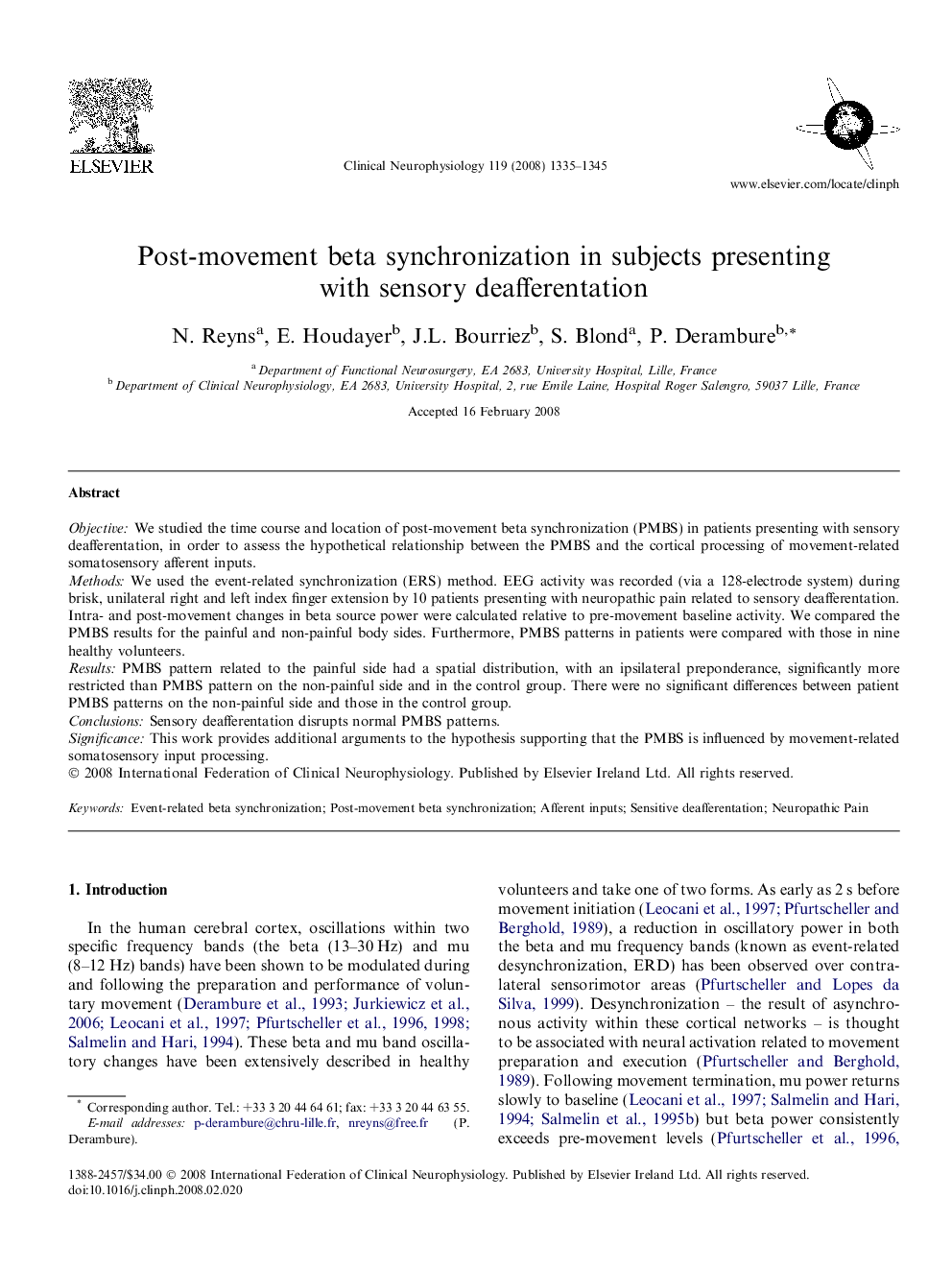| Article ID | Journal | Published Year | Pages | File Type |
|---|---|---|---|---|
| 3047452 | Clinical Neurophysiology | 2008 | 11 Pages |
ObjectiveWe studied the time course and location of post-movement beta synchronization (PMBS) in patients presenting with sensory deafferentation, in order to assess the hypothetical relationship between the PMBS and the cortical processing of movement-related somatosensory afferent inputs.MethodsWe used the event-related synchronization (ERS) method. EEG activity was recorded (via a 128-electrode system) during brisk, unilateral right and left index finger extension by 10 patients presenting with neuropathic pain related to sensory deafferentation. Intra- and post-movement changes in beta source power were calculated relative to pre-movement baseline activity. We compared the PMBS results for the painful and non-painful body sides. Furthermore, PMBS patterns in patients were compared with those in nine healthy volunteers.ResultsPMBS pattern related to the painful side had a spatial distribution, with an ipsilateral preponderance, significantly more restricted than PMBS pattern on the non-painful side and in the control group. There were no significant differences between patient PMBS patterns on the non-painful side and those in the control group.ConclusionsSensory deafferentation disrupts normal PMBS patterns.SignificanceThis work provides additional arguments to the hypothesis supporting that the PMBS is influenced by movement-related somatosensory input processing.
